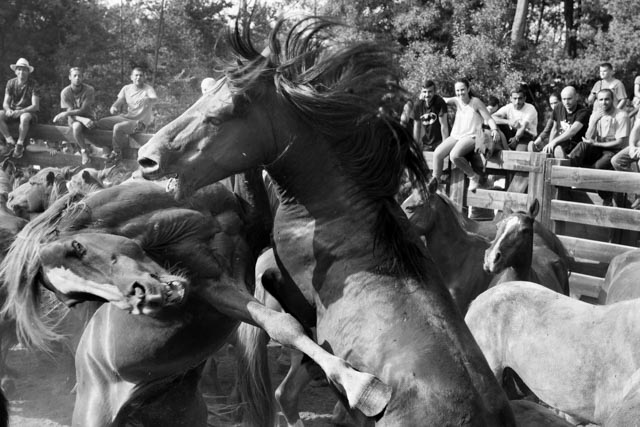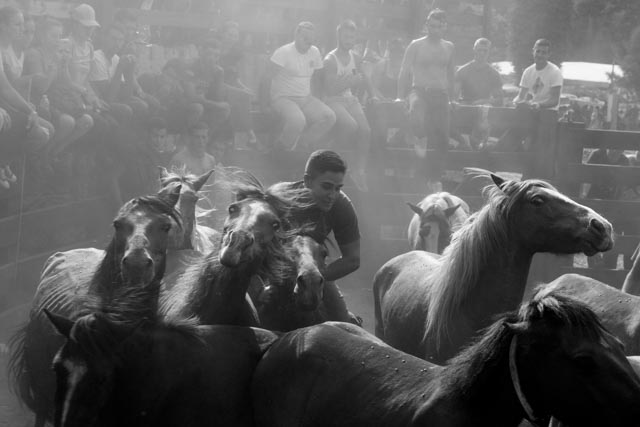









La Rapa de Bestas, Spain.
Every year a tradition of around 8th century takes place in different villages of Galicia located in the Northern part of Spain. It consist in gathering wild horses from the mountains and take them to enclosures called “curros”. Once the horses are there, young men from close villages and towns will cut the horses’s manes by forcing them to the ground with their bare arms. Many times the men get kicked by the horses or get injured in some way. The reason for this tradition was to avoid the horses get tangled in wire fences while they are in the wild.

La Rapa de Bestas, Spain.
Every year a tradition of around 8th century takes place in different villages of Galicia located in the Northern part of Spain. It consist in gathering wild horses from the mountains and take them to enclosures called “curros”. Once the horses are there, young men from close villages and towns will cut the horses’s manes by forcing them to the ground with their bare arms. Many times the men get kicked by the horses or get injured in some way. The reason for this tradition was to avoid the horses get tangled in wire fences while they are in the wild.

La Rapa de Bestas, Spain.
Every year a tradition of around 8th century takes place in different villages of Galicia located in the Northern part of Spain. It consist in gathering wild horses from the mountains and take them to enclosures called “curros”. Once the horses are there, young men from close villages and towns will cut the horses’s manes by forcing them to the ground with their bare arms. Many times the men get kicked by the horses or get injured in some way. The reason for this tradition was to avoid the horses get tangled in wire fences while they are in the wild.

A group of men pose proudly while one of them approaches someone in the public to offer the tail of the horse as a gift.